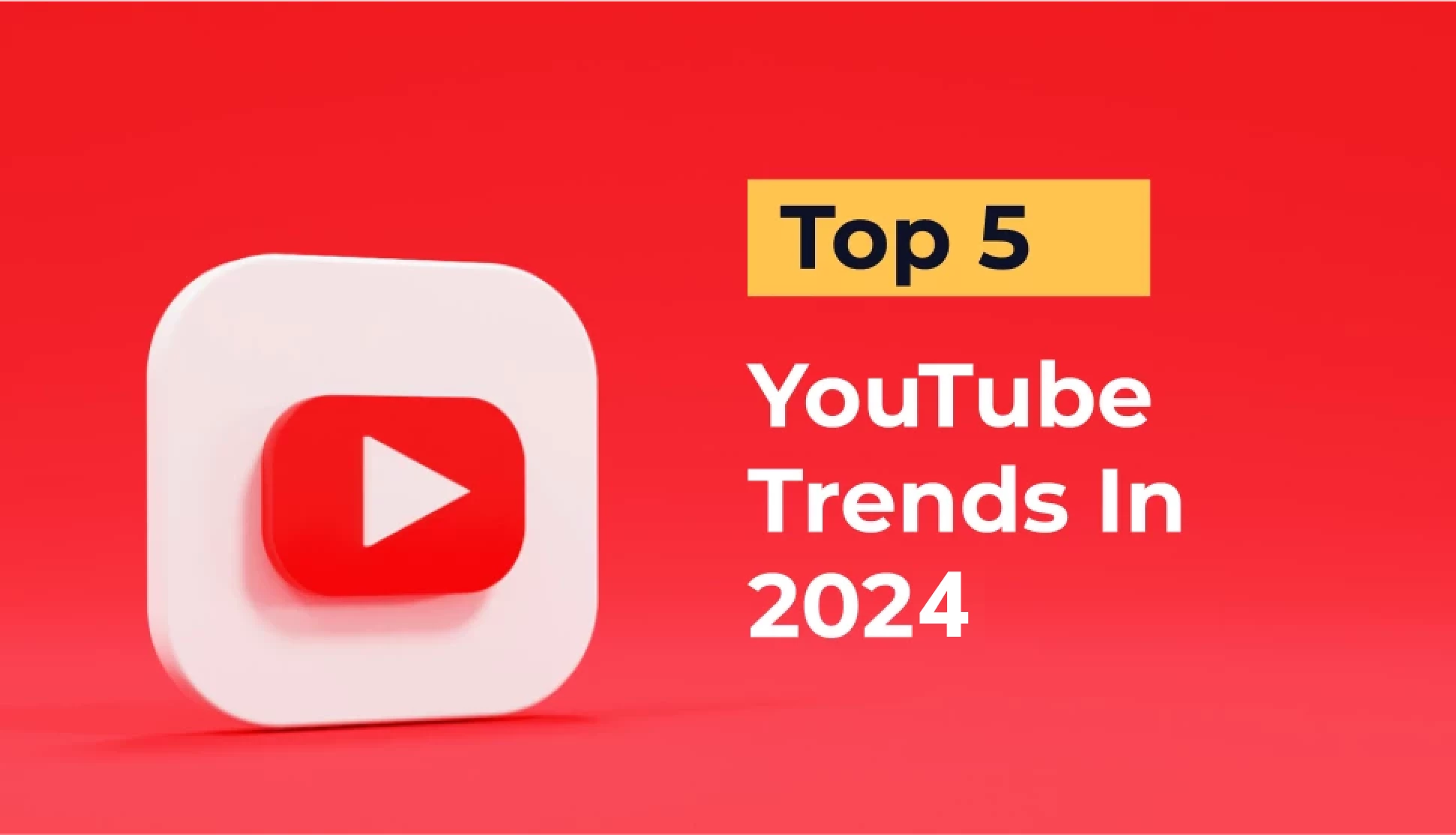Performance Marketing 101
4 mins | Jul 26, 2023

Table of Content
1. Introduction
2. Definition of Performance Marketing
3. Components of Performance Marketing Architecture
4. Benefits and Advantages
5. Examples and Case Studies
9. Conclusion
1. Introduction
Are you interested in a cost-effective way to market your product without burning your budget? Well, here's an intriguing concept: Performance marketing. You only pay when you achieve your desired results.
With performance marketing, advertisers are only charged when specific actions occur, such as a click-through to their page or a purchase made. It's a win-win situation for the retailer and the affiliate, allowing them to strategically target campaigns and achieve a high return on investment based on actual performance.
By paying affiliates only when specific actions are completed, merchants can have peace of mind knowing their money is well spent, as they are already converting their target audience before paying for the transaction. Additionally, merchants can enjoy the added benefits of free brand exposure and targeted clicks.
If you're curious about performance marketing, this guide is perfect. We'll cover the ins and outs of performance marketing, how it works, and the advantages it offers companies.
We'll also discuss real-world performance marketing examples. Whether you're considering a career in performance marketing or want to leverage it for your business, this article is your go-to resource.
Further Reading: 15 tools to analyze your website in 2023
2. Definition of Performance Marketing
What is performance marketing?
Performance marketing is a results-oriented approach to advertising and marketing that focuses on accomplishing specific actions or outcomes.
Unlike traditional marketing methods, it prioritizes measurable results and tangible performance indicators such as clicks, conversions, or sales.
The core principle of performance marketing lies in paying for advertising or marketing efforts only when the desired action occurs, ensuring that businesses get value for their investment.
It allows advertisers to track and analyze campaign performance in real time, optimize strategies based on data-driven insights, and allocate resources effectively to drive the highest possible return on investment (ROI).
Performance enables businesses to target their audience more precisely, optimize their marketing spend, and achieve measurable and impactful results.
Performance Marketing vs Digital Marketing
In several ways, performance marketing differs from traditional advertising and marketing approaches. Performance marketing is focused on measurable results and concrete outcomes, in contrast to traditional methods that emphasize a wide reach and brand awareness.
It emphasizes specific actions or desired outcomes, such as clicks, conversions, or sales, allowing for a more targeted and accountable approach.
One of the distinguishing factors of performance marketing is its pay-for-performance model. Advertisers only pay when specific actions occur, ensuring their budget is allocated towards actual results. This approach provides a higher level of cost efficiency and ROI.
Additionally, performance marketing leverages data and analytics extensively to optimize real-time campaigns. It relies on data-driven insights to identify the most effective strategies and channels, allowing continuous refinement and improvement.
Performance marketing is a more results-oriented and accountable approach that maximizes efficiency and effectiveness in achieving marketing objectives.
Further Reading: Top 5 YouTube Trends
What is the primary focus of performance marketing in terms of results and outcomes?
Performance marketing is centred around delivering measurable results and tangible outcomes. Unlike traditional marketing approaches, performance marketing prioritizes specific actions or desired outcomes, such as clicks, conversions, or sales.
- Clear performance metrics and goals are set in performance marketing to guide marketing efforts and measure success.
- Data tracking and analysis are crucial in performance marketing to evaluate campaign effectiveness and make data-driven decisions.
- Performance marketers continuously optimize their strategies to improve performance and maximize return on investment (ROI).
- Advertisers only pay for advertising when the desired actions occur, ensuring that their marketing efforts generate tangible results and a positive ROI.
Importance of specific actions in performance marketing
- In performance marketing, specific actions are pivotal in driving success and achieving desired outcomes. By focusing on measurable actions, such as clicks, conversions, or sales, marketers can effectively track the effectiveness of their campaigns and optimize their strategies accordingly.
- For instance, consider a performance marketing campaign for an e-commerce website. The marketer sets a specific action goal of increasing conversions.
- By closely monitoring the performance metrics and analyzing data, they can identify the most effective channels, targeting options, and messaging strategies that drive the desired action conversions.
- By prioritizing specific actions, performance marketing enables marketers to focus on the bottom line and maximize return on investment.
- It ensures that marketing efforts are aligned with measurable outcomes, resulting in a more efficient and effective use of resources and ultimately driving business growth and success.
3. Components of Performance Marketing Architecture
The architecture of performance marketing comprises several key components that work together to drive successful campaigns and deliver measurable results. Here are the key components:
- Targeting and Segmentation:
In performance marketing, precise audience targeting and segmentation are vital. By identifying and understanding the specific characteristics and behaviours of the target audience, marketers can create highly tailored campaigns that resonate with the right people.
For example, an online fitness brand may target fitness enthusiasts aged 25-35 who live in urban areas and have shown interest in healthy lifestyle content. By crafting messages and offers that speak directly to this audience's needs and preferences, the brand can increase the chances of driving conversions and achieving desired outcomes.
- Tracking and Analytics:
Tracking and analytics play a pivotal role in performance marketing. These tools enable marketers to collect and analyze data, gaining valuable insights into campaign performance.
For instance, with the help of analytics platforms, a digital advertising agency can track metrics like click-through rates, conversion rates, and customer engagement to evaluate the effectiveness of their campaigns.
By monitoring these metrics, they can identify areas of improvement and make data-driven decisions to optimize their strategies, resulting in better performance and higher return on investment.
- Performance-based Pricing Models:
Performance marketing often employs various pricing models, such as cost per click (CPC), cost per action (CPA), cost per acquisition (CPA), etc. It ensures that the company pays for tangible outcomes and allows for better budget control and accountability.
Advertisers choose specific channels to display their ads and then pay based on how well those ads perform. There are different ways to determine payment in performance marketing:
- Cost Per Click (CPC):
Advertisers pay when users click on their ad. This method is effective for driving traffic to your website.
Impressions refer to the number of times your ad is viewed. With CPM, you pay for every thousand views your ad receives. For example, if 10,000 people view your ad, you'd pay your base rate multiplied by 10.
- Cost Per Sale (CPS):
With CPS, payment is made only when an ad generates a sale. This approach is commonly used in affiliate marketing as well.
- Cost Per Lead (CPL):
CPL involves paying when someone signs up for a newsletter or webinar, providing valuable leads for follow-up and potential sales.
- Cost Per Acquisition (CPA):
CPA encompasses various specific actions consumers take, such as making a purchase, sharing contact information, or visiting your blog. Advertisers pay when these actions are completed.
Advertisers can use these payment structures to align their investment with the desired outcomes, optimizing their marketing efforts and achieving better results.
- Conversion Funnel:
The conversion funnel is a fundamental concept in performance marketing. It represents the customer journey from initial awareness to final conversion. Marketers use strategies and tactics to guide prospects towards desired actions at each funnel stage.
For instance, an online travel agency may optimize its landing pages to encourage visitors to sign up for a newsletter or request a quote, ultimately leading to a booking. By understanding the conversion funnel and implementing optimization techniques, marketers can enhance the overall conversion rate and improve the effectiveness of their campaigns.
- Optimization and Testing:
Optimization and testing are at the core of performance marketing. Marketers continuously analyze data, experiment with strategies, and test various elements, such as ad creatives, messaging, and landing page designs.
For instance, an app developer may run A/B tests to determine which app icon generates higher click-through rates. Marketers can make informed decisions by optimizing campaigns based on real-time data and test results, refine their approach, and drive better results over time.
By leveraging these components, performance marketing enables marketers to drive targeted, measurable, and results-driven campaigns. It provides the ability to optimize strategies in real-time, allocate resources effectively, and achieve a higher return on investment than traditional marketing approaches.
Further Reading: Best AI Tools for Building Websites
4. Benefits and Advantages
Performance marketing has become increasingly important as the digital marketing industry grows.
There are many agencies that perform performance marketing effectively without losing too much money. Wave Connect is one of them.
They have observed that campaigns driven by specific, measurable actions, such as click-through rates and conversions, consistently outperform broader marketing strategies. For example, in a recent campaign, we focused on optimizing targeted ads based on real-time data. By honing in on the most effective channels and messages, we achieved a 20% increase in conversions within just three weeks. This approach maximizes ROI and ensures that our marketing efforts are directly aligned with the business objectives, driving sustainable growth and success.
By fully embracing performance marketing, you can tap into the immense potential it offers for scaling your business.
Here are the top three compelling reasons why your business should invest in performance marketing:
Cost-effectiveness:
Performance marketing offers businesses a cost-effective approach to allocating their marketing budgets. Unlike traditional advertising methods, where businesses pay for impressions or ad placements without guaranteed results, performance marketing allows advertisers to pay only for desired actions or outcomes.
For example, instead of paying for ad views, businesses can opt for cost-per-click (CPC) or cost-per-acquisition (CPA) models, where they only pay when users click on their ads or make a purchase. This targeted payment structure ensures that businesses spend their budget on actions more likely to generate conversions.
Measurable Results:
One of the key advantages of performance marketing is its ability to provide measurable results. By leveraging tracking and analytics tools, businesses can monitor the performance of their campaigns in real-time.
They can track metrics such as click-through rates, conversion rates, and return on investment (ROI) to assess the effectiveness of their marketing efforts. This data-driven approach allows businesses to make informed decisions, optimize campaigns, and allocate resources more effectively.
Flexibility and Scalability:
Performance marketing allows businesses to adapt and scale their campaigns based on real-time performance data.
For instance, if a particular ad or channel generates high conversion rates, businesses can allocate more budget to that specific campaign or channel to maximize results.
Conversely, if a campaign is underperforming, adjustments can be made to improve its effectiveness. This agility and scalability enable businesses to optimize their marketing strategies and achieve better long-term outcomes.
5. Examples and Case Studies
Spotify Case Study
Due to its ease of use and effective marketing, Spotify now has almost all of the best up-and-coming singers, composers, and local artists on its platform.
Let's examine this case study to learn more about Spotify's performance marketing approach.
Here are some examples of how Spotify has successfully implemented performance marketing strategies:
- The Freemium model is highly effective for both users and the platform, as it allows users to enjoy free music while listening to ads, creating a mutually beneficial arrangement.
- Incorporating emotions into ads can significantly enhance the connection with the target audience, leading to increased international and local reach.
- Establishing strategic partnerships with artists, their labels, popular musicians, and podcasters is another effective way to keep the platform dynamic and engaging.
A streamlined AI interface achieves a more user-centric experience, making the music streaming experience more personalized and seamless.
Airbnb Success Story
According to Mat Zucker, a senior partner at consulting firm Prophet, Airbnb is a great example for direct-to-consumer brands looking to transition from a performance-marketing approach to a more integrated brand marketing strategy.
The company understands that marketing is not solely about buying customers; over 90% of its website traffic comes organically without needing search ads.
Using public relations tactics to generate news coverage and running advertising campaigns across various channels, including television, Airbnb aims to build its brand and establish a stronger connection with its target audience.
Airbnb's CEO, Mr Chesky, emphasizes that performance marketing is used strategically to balance supply and demand rather than simply acquiring many customers. This approach demonstrates Airbnb's intention to optimize its marketing efforts and focus on long-term brand growth and customer engagement.
Further Reading: Top 10 AI Tools for Writing
6. Conclusion
In conclusion, this blog has discussed the key aspects of performance marketing and its impact on businesses. We learned that performance marketing focuses on specific actions like clicks, conversions, and sales.
Throughout the post, we highlighted the benefits of performance marketing, including cost-effectiveness, measurable results, flexibility, and scalability. Real-world examples from popular brands like Spotify and Airbnb showcased the successful implementation of performance marketing strategies.
In today's competitive marketing landscape, efficiency and tangible outcomes are crucial. Performance marketing offers a powerful strategy for businesses to allocate budgets efficiently, make data-driven decisions, and optimize campaigns. The potential benefits range from increased brand visibility and customer engagement to improved return on investment.
By implementing its strategies, you can unlock new growth opportunities and drive tangible results for your business. Embrace performance marketing, take the next step, and experience its transformative impact on your marketing strategies.
Remember, success in the digital era comes from harnessing the power of performance marketing. Stay proactive, embrace this dynamic approach, and let performance marketing propel your business to new heights.
Author







